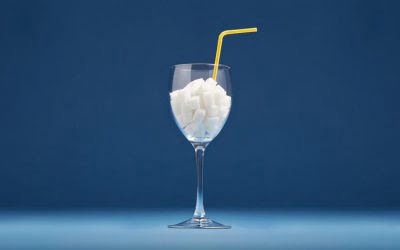The document outlines the workshop’s goals of examining how sport can support youth-led approaches to prevention and identifying good practices for others. It then lists the participants and their contact information and delves into the content covered at the workshop, including the value and limitations of using sport for prevention. In a multisite, randomized controlled study, the rate of successful outcomes after 12 months with suboxone was under 50% and had a relapse rate of 57% whereas those treated with vivitrol had a relapse rate of 65% 45.
The effects of substance abuse on youth
Legal and ethical considerations are fundamental when implementing strategies to prevent substance abuse in sports. Organizations must adhere to national and international laws governing drug testing, privacy rights, and athlete confidentiality. Ensuring compliance helps protect athletes’ legal rights while promoting a drug-free environment. Ultimately, integrating mental health support and intervention into sports culture promotes a holistic approach to athlete well-being. It not only enhances performance but also helps maintain a safe, healthy environment that discourages substance abuse and encourages long-term mental resilience.
Substance Use Prevention
Effective drug testing programs incorporate unannounced tests to ensure unpredictability and reduce the likelihood of athletes bypassing regulations. Random testing policies also serve as a deterrent, emphasizing that no athlete is exempt from scrutiny. Such measures reinforce a culture of clean sport and integrity within the sporting community. Given that famous athletes have admitted to using performance-enhancing drugs, it’s not surprising that teens might turn to steroids and other substances to boost their sports performance.
This proactive approach can significantly diminish the potential for substance abuse, as individuals feel empowered and better equipped to navigate challenging social situations. Surrounding oneself with individuals who prioritize a healthy, drug-free lifestyle can provide encouragement and bolster resilience against peer pressure. Such relationships foster an environment where conversations about the consequences of drug use can occur openly.
Why Trust AddictionResource.com

This is one of the substances that can demonstrate the health risks of drug abuse in sports. For example, in the 90s, several cyclists died due to this drug, which increases the risk of cardiovascular conditions such as heart attack and pulmonary embolism. Open communication about the dangers of drugs and establishing clear rules can greatly influence children’s decisions. Active family involvement, such as shared activities and meals, fosters stronger bonds, which in turn encourages youth to make healthier choices and feel more secure discussing their feelings and peer pressures.
Increased awareness of one’s biological and environmental background can lead to proactive measures against addiction. InShape PPW takes less than 60 minutes to implement, is highly flexible and can be used as a stand-alone intervention, or as an add-on component to other prevention, health, sports, fitness, recreation, education, intervention, or treatment programs. While it was created as a universal prevention intervention, many organizations use it as a selective and indicated prevention program for high-risk populations. SPORT PPW is highly flexible and can be used as a stand-alone intervention, or as an add-on component to other prevention, health, sports, fitness, recreation, education, intervention, or treatment programs.

Key examples include the World Anti-Doping Agency’s comprehensive education programs, which have significantly reduced doping cases across international sports. Another example is the NFL’s rigorous drug testing protocols combined with athlete support programs, fostering transparency and accountability. By working together, sports organizations and health agencies create a supportive environment for at-risk athletes, ultimately reducing the incidence of substance abuse and promoting healthier, fair sporting practices. By fostering a supportive environment, sports organizations can mitigate the impact of performance stress and reduce the likelihood of substance abuse among athletes. Effective education programs utilize various methods, including workshops, seminars, and informational materials.
Importance in Drug Prevention

Regular screening for at-risk individuals, particularly in high-stress environments like schools or workplaces, ensures that Drug rehabilitation those struggling with substance use receive the support they need early on. One idea would be to give up testing for recreational, non-performance enhancing drugs. Another might be to define the drugs that are most likely to be used in each sport and test only for those.
Opioid use over an NFL career is estimated to be around 52% with 4% using at any given time, whereas one-quarter to one-half https://ecosoberhouse.com/ of high school athletes have used nonprescription opioids with a lifetime opioid use between 28 and 46% 5,26. A systematic review found that marijuana use had replaced tobacco use as the second highest used drug among athletes and others suggested one in four athletes have used marijuana recently or within the past year 27,28,29. Providing mental health support and intervention is vital in preventing substance abuse in sports. It helps address underlying issues that may lead athletes to misuse substances as coping mechanisms.
- And if they are lonely or dealing with stress, teens may use substances to distract from these feelings.
- Inclusion criteria related to the participants were the consideration of all age groups (particular focus on adolescent age and young adults) as well as persons inside (elite) sports such as athletes and persons outside (elite) sports such as students.
Understanding the Risks of Substance Abuse in Sports
Leadership within sports organizations is essential for embedding integrity into everyday practice. Policies that promote transparency, accountability, and zero tolerance towards doping create a unified stance against substance abuse. Consistent enforcement of these policies sends a strong message that clean sport is mandatory and non-negotiable. By actively involving community members, these programs help establish a supportive environment that discourages substance use and encourages athletes to seek help when needed. They also serve to normalize drug-free participation in sports, thereby reducing stigma and fostering positive attitudes.
Conducting regular drug testing
- Developing such systems aligns with prevention efforts, ensuring that athletes receive the necessary resources to maintain both their well-being and integrity in sports.
- Program participants also receive a follow-up call from a dental hygienist to discuss a quit date.
- Before your kids begin playing a sport, be sure to have them practice in their free time.
- Numerous sports organizations have successfully implemented strategies to prevent substance abuse, serving as instructive examples.
- The exact test used will depend on what types of substances are being checked for and the policies of the league doing the testing.
Over the past 45 years, great progress has been made regarding anti-doping policies but yet it continues to play a role at all levels of sporting competition. The recent doping scandal at the 2022 Beijing Games reminded the world of sport, doping has not gone away. What has become evident is that doping practices have evolved from the use of anabolic steroids to improve strength, to masking agents to cover banned substances and strategies to improve endurance and speed-up recovery time from injury and overtraining. Doping has been used to extend athletic careers, as compensation for professional athletes has soared over the past few decades. The core tenets of doping are well articulated by WADA, substance abuse in sports the World Anti-Doping Agency, the leading global ant-doping agency.
